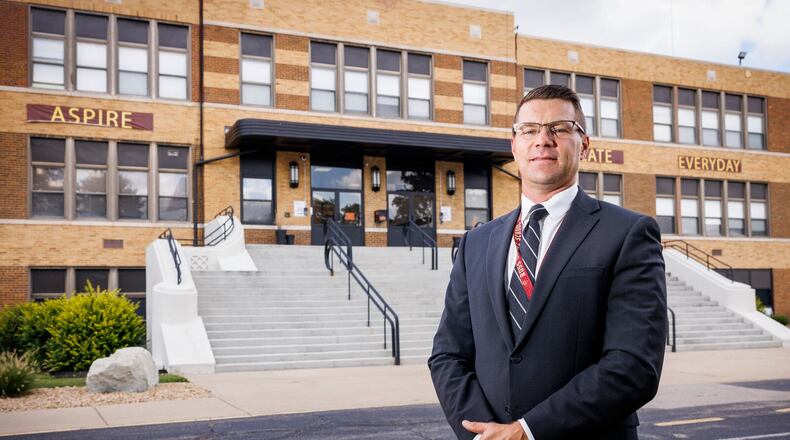“My first year at Ross Schools has focused on building trust, celebrating academic excellence, and strengthening the sense of community,” he said.
“I prioritized listening—to staff, students, and families—and used that feedback to guide meaningful changes.”
“One initiative we have led this year is what we call our Community Conversations, where we go into a host community member’s home for an evening of discussion about all things Ross. These have been enlightening and have led to several themes for the district that we can make better and expand upon,” said Rice, who previously worked at the 10,000-student Fairfield district before becoming superintendent Ross, which enrolls 2,800.
“Coming from a larger district, several aspects of Ross’s smaller size stood out and challenged me, in a good way. In Ross … there is a greater visibility and accountability. I learned quickly that every decision is felt more directly and personally. That deepened my sense of responsibility and helped me be more thoughtful and intentional.”
“Additionally, leaders in Ross wear multiple hats. I was surprised by how many roles I needed to play—from instructional leadership to operations to community outreach and human resources. In larger systems, those functions are often spread out among more people. At Ross, I am proud of the leadership team who is hands-on and all-in,” he said.
For more than a decade Ross Schools have consistently been rated by the Ohio Department of Education and Workforce Development as the top overall academic performer in Butler County despite recent years of financial struggles that included millions in budget cuts and three consecutive tax levy rejections by voters in 2022 and 2023.
Unlike some area public school superintendents, Rice lives and has children in the district and has long called Ross Twp. home.
“One of the most unexpected and rewarding surprises this school year at Ross has been the joy of being around my three boys and kids of our community every day. Many of these kids, I have coached or known since they were in pre-school. Watching them grow not just academically, but also as individuals within this school community, has been an experience I didn’t fully anticipate would be so impactful. It’s given me a deeper appreciation for the culture and care that defines Ross,” said Rice, who praised the district’s teachers and non-instructional employees.
“I’ve also been continually inspired by the strength and dedication of our teaching staff. These educators have carried Ross through some incredibly difficult seasons, and they’ve done so with grace, resilience, and an unwavering commitment to our students.”
With the looming state biennium budget approaching its June 30 deadline for implementation – and still unknown levels of state funding for each of Ohio’s 613 school districts – Rice said the coming 2025-2026 school year has him wary.
“One of my greatest concerns is tied to the state’s continued over-reliance on local taxpayers to equitably fund public education. Ross has a long-standing history of being exceptional stewards of our community’s resources—we take that responsibility very seriously. However, each successive state budget seems to shift more of the financial burden onto our local residents, while the state’s share of funding decreases.”
“In Ross, this trend is deeply concerning. It means that our families and taxpayers are shouldering an ever-growing portion of the cost to provide high-quality education. As a result, every decision we make must be viewed through the lens of long-term financial sustainability. It’s not just about balancing a budget; it’s about ensuring we can continue to provide excellent educational opportunities without placing undue pressure on our community.”
The start of a new school year in August will bring curricula changes, he said.
“Looking ahead to the next school year, one of the most significant changes for our students and their families will be the full implementation of a new ELA (English Language Arts) program in the younger grades. Over the past year, we’ve taken a thoughtful approach—piloting several programs to find the best fit for our students and teachers. We’re excited to roll out a program that aligns with research-based practices and provides strong support for early literacy development.”
“Additionally, we’ll be taking a close look at our current academic programs and school models to ensure we are serving our students in the best and most efficient manner possible. This strategic review is especially timely as we continue to see a trend of smaller class sizes at the elementary level—a shift that presents both opportunities and challenges,” said Rice.
About the Author
